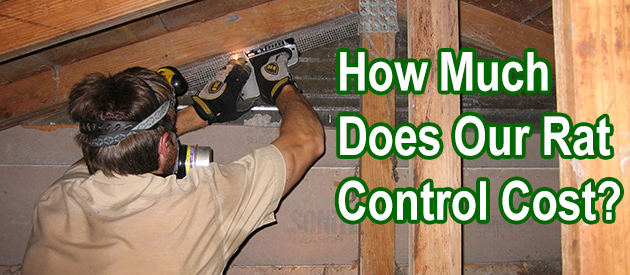El Paso County, Colorado Springs Rat Control Situation:
Hi David: I am dealing with a rodent issue in my apartment, I am constantly cleaning feces and washing and mopping and bleaching the areas in which they seem to deficate. It seems to be less now that I have put down the poison to kill them and send them to their nest. I now see that they are eating the bait by the change in the color of the fece, what is your safety recommendations on continued cleaning and what diseases might be associated with your field or house mice. Also I now see larger pellets. I am worried that the mouse might be larger then they were before. May God bless and keep you Andra
Hi David, I just looked at your website and found it very interesting,I've had rats in the roof of my house for many years and I'm just in the process of eliminating every possibly entry point as you explained. I've tried the poison and totally agree with what you say about that. When I look around my house I can actually see where they would be getting in.You say it's best to block every entry point while the rats are still there, and then trap what rats are blocked in,, yes that makes sense to me .Well thanks again for the most informative website . regards Colin in Colorado Springs
Colorado Springs Rat Control Tip of The Week
The Myth That Poison Makes Rats Thirsty And Die Outside
No, rat poison doesn't make the rat thirsty. Poison doesn't make the rodent go out to drink, and along these lines die outside. Rat poison makes the rat dormant, and it dies any place it happens to be at when the poison takes effect. Since the rats living inside a house or building invest most of their energy inside the structure, they usually die inside that building, not outside.
Will Poison Make A Rat Thirsty And Die? (NO - That's A Myth)
Individuals use poisons since they think it is a protected, viable, hands-off strategy for evacuating pests. They have certain thoughts regarding it, but what amounts of those thoughts are true? One thought many convey is that poison will make rodents thirsty. When they consume the poison, they will out of nowhere have a solid, insatiable thirst. That will lead them outside, looking for water, where they will inevitably die. With this thought, poison appears to be the undeniable answer. It gets the rats out and kills them, getting rid of your concern with few to no drawbacks. The problem is, none of that is valid. Poison won't have this impact on rats or mice, or some other animal so far as that is concerned.
Using poison doesn't prompt thirst. It won't cause the rat(s) to leave the property, and go outside to find water. None of this is true; they are all myths. Poison will kill rats, however, not through thirst. Poisons kill rats in different ways, contingent upon the kind of poison you use. No poison will make the rodent want to leave the property whatsoever.
With each one, there is a higher possibility of the rat dying in your home. Ordinarily, this is going to mean within your dividers. Poisoned rats and mice are likely going to build up inside the dividers, and that is if they all eat the poison. There are various issues with poison, such as its ability to kill other animals, and the pain it inflicts on the rats, which adds to the negatives of it as a solution to pest invasions.


